Sailing into Madang in a light rain, I noticed a native band greeting us with some lively music. I also noticed that a couple of the workers who were waiting to help dock the ship were dancing to the music: they would dance and then stop and walk around like the others, pretending to be cool. Then one guy couldn't help himself anymore and would start dancing again. I put my camera in video mode and shot the whole sequence – it’s hilarious, but given the internet bandwidth here, you’ll probably have to wait until I get home to see it. There are a couple of guitars, but the main instrument is made of huge hollow bamboo logs that they play using flip-flops with foam glued to them.
Very entertaining and enterprising.
As we approached Papua New Guinea (PNG), David and I debated whether to start our anti-malarial medication, and decided better safe than sorry, so we did. As we left the port on our tour, I noticed a sign on the gate warning that PNG is a malaria prone area and visitors are advised to take anti-malaria medication; if not, they should see their doctors immediately if they have any strange symptoms within six months of visiting the island.
When the guide mentioned that malaria is a problem on the island, one of the other passengers asked if it was only in the remote areas and the guide replied that no, the problem was everywhere on the island. So we were glad we had chosen as we did. Apparently other people thought the only dangerous place was India.
The rain did stop, which was nice, since David and I had a tour to see some of the island. We went first to a native village, Bilbil, where they are reasonably used to tourists.
The tourist industry in Madang is still pretty primitive. The roads are mainly narrow, sometimes narrow enough that if two vehicles meet, one has to get off the road to let the other by. We had a delay leaving Bilbil because another set of buses was coming in when we were leaving and we couldn’t get by them. And we couldn’t wait until they came in because they had nowhere to park until we left.
The village is supposedly typical of the native lifestyle before the white man came, and the buildings were certainly traditional style, made out of small logs and thatch and built up on stilts (for the most part – I noticed a lot of modern materials in some of the houses on the edges of town). The villagers dress up for us (some of them) and show the clay pots they make. Some of the women demonstrate the two methods of making them, and there are lots for sale.
You can walk around the town taking pictures, although some of the villagers expect money for posing, and everyone is very friendly. A group dressed in native attire and paints did a dance for us, and the children were everywhere.
Some people were fishing in the bay, just wading out into the water with their fishing poles, and they had boats and dogs and chickens all over the place.
All very laid-back and not overtly touristy, more like coming to visit the country cousins.
We then went to a butterfly park, which I was really enthusiastic about, because Papua New Guinea is known for its butterflies. There was a sort of mesh house that had two butterflies (alive) inside and one butterfly (dead) outside. It was extremely disappointing. I don’t know whether the butterflies had emigrated or it was the wrong season, or whether they have never had any there. They did have butterfly bushes, so in theory there could be butterflies attracted. I did see one flying around the garden, and I was chasing it with my camera, trying to get within range so I could take a picture, when I heard a policeman crying "Come back! Come back!" So I stopped and asked him “Are we not supposed to go here?” “Oh, no, it’s alright,” he said. “I was talking to the butterfly, trying to get it to come back for you.” So I asked him if I could take his picture, and he said yes. He told me to tell my friends in America that this is what a Papua New Guinea policeman looks like.
So I will tell you when I see you.
Our next stop was at a cultural center where they had some exhibits in a museum that were very interesting, but no photos and no pictures for sale. Outside, another group dressed the same as the group at Bilbil did another native dance for us, and dozens of people had a sort of native market where they displayed handicrafts for sale.
Some of the carvings were very intricate and beautiful. I bought a small Papua New Guinea flag at the museum and went over to give it to David to hold because it was getting in the way of taking pictures. I found him talking to a Papuan and they were getting along like a house afire. I asked if I could take their picture together, and the man said yes; immediately about four more men came and got into the picture.
David told me later that they were a group and had come together, so of course they wanted to be together in the picture. They were trying to talk David into coming on a boat trip to the various harbors around the island with them, and when I came, they invited me as well; but David explained that we didn’t have time because the ship was leaving soon.
As we left the cultural center, I noticed that the trees in front that I thought had some large fruit really were full of flying foxes (bats) just like the ones on Tonga.
I got a few pictures of them flying about, and later noticed that one picture I had thought was of two bats was really of one bat and one hawk.
Our last stop was at the Coastwatchers Memorial. It is a tall structure that looks like a lighthouse and commemorates the brave men and women who stayed behind enemy lines in WWII and sent the Allies information on Japanese ship and troop movements.
After that it was back to the ship to continue on our world cruise.
On the ship, we found a butterfly that had apparently decided to hitch-hike its way to somewhere and all the disappointed photographers went down to take its picture. So we got three live butterflies captured on film.
Papua New Guinea
Sunday, February 27, 2011
 Madang, Papua New Guinea
Madang, Papua New Guinea
Other Entries
-
17Wild seas in the Cook Islands
Jan 3028 days prior Avarua, Rarotonga, Cook Islandsphoto_camera15videocam 0comment 0
Avarua, Rarotonga, Cook Islandsphoto_camera15videocam 0comment 0 -
18The independent nation of Niue
Feb 0126 days prior Alofi, Niuephoto_camera8videocam 0comment 0
Alofi, Niuephoto_camera8videocam 0comment 0 -
19Tonga, the Sacred Garden
Feb 0324 days prior Nuku'alofa, Tongaphoto_camera17videocam 0comment 4
Nuku'alofa, Tongaphoto_camera17videocam 0comment 4 -
20Auckland, the City of Sails, Day 1
Feb 0621 days prior Auckland, New Zealandphoto_camera19videocam 0comment 1
Auckland, New Zealandphoto_camera19videocam 0comment 1 -
21Auckland, the City of Sails, Day 2
Feb 0720 days prior Auckland, New Zealandphoto_camera9videocam 0comment 1
Auckland, New Zealandphoto_camera9videocam 0comment 1 -
22Tauranga, on the Bay of Plenty
Feb 0819 days prior Tauranga, New Zealandphoto_camera12videocam 0comment 2
Tauranga, New Zealandphoto_camera12videocam 0comment 2 -
23Wine and Art Deco at Napier on Hawke's Bay
Feb 0918 days prior Napier, New Zealandphoto_camera15videocam 0comment 0
Napier, New Zealandphoto_camera15videocam 0comment 0 -
24Wellington -- Following Frodo's Footsteps
Feb 1017 days prior Wellington, New Zealandphoto_camera19videocam 0comment 1
Wellington, New Zealandphoto_camera19videocam 0comment 1 -
25Christchurch -- A bit of England in New Zealand
Feb 1116 days prior Christchurch, New Zealandphoto_camera19videocam 0comment 0
Christchurch, New Zealandphoto_camera19videocam 0comment 0 -
26Dunedin and the Yellow-Eyed Penguin Reserve
Feb 1215 days prior Dunedin, New Zealandphoto_camera22videocam 0comment 2
Dunedin, New Zealandphoto_camera22videocam 0comment 2 -
27Stewart Island: the Far South
Feb 1314 days prior Oban New Zealand, New Zealandphoto_camera14videocam 0comment 0
Oban New Zealand, New Zealandphoto_camera14videocam 0comment 0 -
28Magnificent Scenic Cruising in Fiordland
Feb 1413 days prior Fiordland, New Zealandphoto_camera16videocam 0comment 2
Fiordland, New Zealandphoto_camera16videocam 0comment 2 -
29Meeting with the Devil
Feb 1710 days prior Hobart, Australiaphoto_camera23videocam 0comment 0
Hobart, Australiaphoto_camera23videocam 0comment 0 -
30Visiting the Prison at Port Arthur
Feb 189 days prior Port Arthur, Australiaphoto_camera21videocam 0comment 1
Port Arthur, Australiaphoto_camera21videocam 0comment 1 -
31Wow! is all I can say about Sydney
Feb 207 days prior Sydney, Australiaphoto_camera24videocam 0comment 2
Sydney, Australiaphoto_camera24videocam 0comment 2 -
32Leaving Sydney
Feb 216 days prior Sydney, Australiaphoto_camera26videocam 0comment 0
Sydney, Australiaphoto_camera26videocam 0comment 0 -
33The Great Barrier Reef
Feb 243 days prior Cairns, Australiaphoto_camera21videocam 0comment 0
Cairns, Australiaphoto_camera21videocam 0comment 0 -
34Papua New Guinea
Feb 27 Madang, Papua New Guineaphoto_camera22videocam 0comment 0
Madang, Papua New Guineaphoto_camera22videocam 0comment 0 -
35Crossing the Equator
Mar 012 days later Madang, Papua New Guineaphoto_camera11videocam 0comment 1
Madang, Papua New Guineaphoto_camera11videocam 0comment 1 -
36Sorry, we didn't go to Koror after all....
Mar 023 days later Koror, Palauphoto_camera4videocam 0comment 0
Koror, Palauphoto_camera4videocam 0comment 0 -
37The (unexpected) first day in Manila
Mar 045 days later Manila, Philippinesphoto_camera24videocam 0comment 0
Manila, Philippinesphoto_camera24videocam 0comment 0 -
38The second day in Manila (formerly the first)
Mar 056 days later Manila, Philippinesphoto_camera4videocam 0comment 0
Manila, Philippinesphoto_camera4videocam 0comment 0 -
39Hong Kong Special Administrative Region
Mar 078 days later Hong Kong, Chinaphoto_camera20videocam 0comment 1
Hong Kong, Chinaphoto_camera20videocam 0comment 1 -
40Last day in Hong Kong
Mar 089 days later Hong Kong, Chinaphoto_camera18videocam 0comment 0
Hong Kong, Chinaphoto_camera18videocam 0comment 0 -
41Cooking in Saigon (HoChiMinh City)
Mar 1112 days later Phu My Vietnam, Vietnamphoto_camera28videocam 0comment 1
Phu My Vietnam, Vietnamphoto_camera28videocam 0comment 1 -
42Tea and Raffles Hotel
Mar 1314 days later Singapore, Singaporephoto_camera22videocam 0comment 0
Singapore, Singaporephoto_camera22videocam 0comment 0 -
43Wild times at the Bird Park!
Mar 1415 days later Singapore, Singaporephoto_camera35videocam 0comment 0
Singapore, Singaporephoto_camera35videocam 0comment 0 -
44Kochi, province of Kerala (Land of Coconuts)
Mar 1819 days later Kochi, Indiaphoto_camera22videocam 0comment 0
Kochi, Indiaphoto_camera22videocam 0comment 0 -
45Magnificent Mumbai, Heartbeat of India
Mar 2021 days later Mumbai, Indiaphoto_camera14videocam 0comment 1
Mumbai, Indiaphoto_camera14videocam 0comment 1 -
46Fun and games in Bombay (Mumbai)
Mar 2122 days later Mumbai, Indiaphoto_camera15videocam 0comment 1
Mumbai, Indiaphoto_camera15videocam 0comment 1 -
47The Natural History of Sharjah
Mar 2425 days later Dubai, United Arab Emiratesphoto_camera21videocam 0comment 0
Dubai, United Arab Emiratesphoto_camera21videocam 0comment 0 -
48Superlative Dubai
Mar 2526 days later Dubai, United Arab Emiratesphoto_camera15videocam 0comment 0
Dubai, United Arab Emiratesphoto_camera15videocam 0comment 0 -
49Trading the Amsterdam for a Dhow
Mar 2627 days later Muscat, Omanphoto_camera14videocam 0comment 0
Muscat, Omanphoto_camera14videocam 0comment 0 -
50Checking out Job's Tomb
Mar 2728 days later Salalah, Omanphoto_camera18videocam 0comment 0
Salalah, Omanphoto_camera18videocam 0comment 0 -
51Luxor after All!
Apr 0234 days later Safaga, Egyptphoto_camera21videocam 0comment 1
Safaga, Egyptphoto_camera21videocam 0comment 1 -
52Petra, the Rose City
Apr 0335 days later Aqaba, Jordanphoto_camera20videocam 0comment 0
Aqaba, Jordanphoto_camera20videocam 0comment 0

 Madang, Papua New Guinea
Madang, Papua New Guinea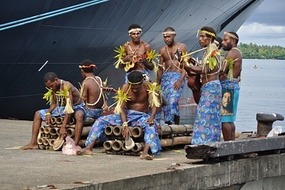

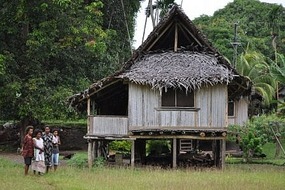
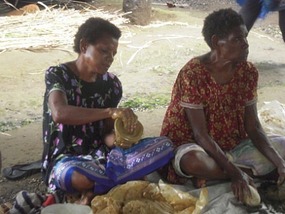
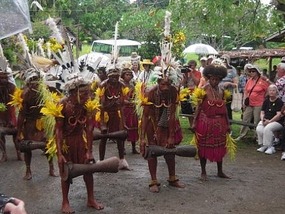
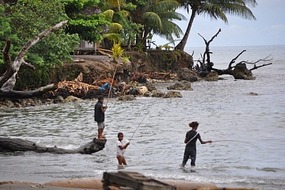

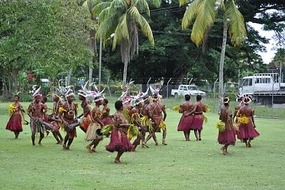
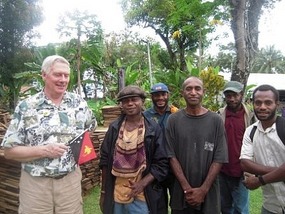
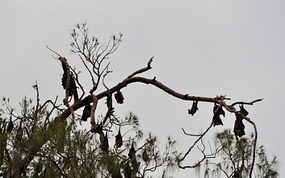
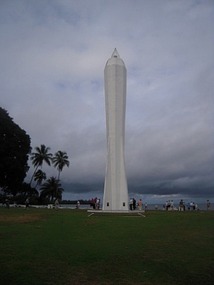
















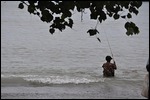
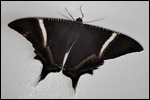
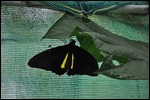
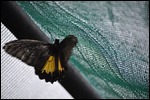
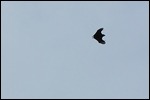
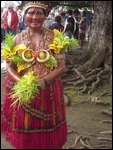
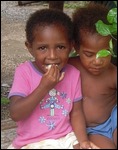
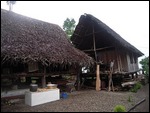
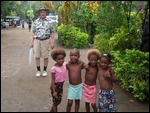
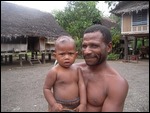
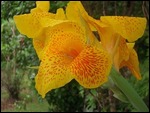
2025-05-22